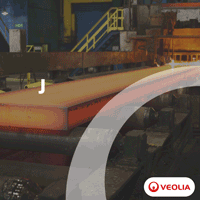NLMK Installs Pulverized Coal Injection System
08/01/2013 - NLMK has started hot testing pulverized coal injection (PCI) into its blast furnaces at its main production site in Lipetsk, Russia.
Installing this resource-saving technology, which has only recently been introduced in Russia, began at its blast furnace #5 with a capacity of 2.6 million metric tons of pig iron per annum.
This technology will continue to be integrated into blast furnace operations in 2014. According to the approved plan, next year a PCI system will be installed at blast furnace #4 with an annual capacity of approximately 1.8 million metric tons.
NLMK managing director Sergey Filatov said: “Installing pulverized coal injection technology at the Lipetsk site is one of the key elements of our general program to boost efficiency and cut unit costs, which is currently a priority across the entire NLMK Group.”
PCI technology involves co-injecting natural gas and fine coal particles into the blast furnace. Using pulverized coal fuel made from steam coals reduces gas consumption by 70–80% and coke consumption by 20–30%. Replacing expensive raw materials with cheaper alternatives will reduce the cost of producing pig iron, a key feedstock for steel manufacturing.
Approximately RUB 3.76 billion has been invested in the project, which involves equipping blast furnaces #4 and #5 with PCI systems.
In 2011, NLMK’s project to install pulverized coal injection for pig iron production, alongside its project to build a new recovery co-generation plant that runs on blast furnace gas, received an award from the European Bank for Reconstruction and Development for its innovative approach to energy management and environmental protection.
In 2012, NLMK became the first Russian steelmaker to have its energy resource management system certified for compliance with the international requirements of ISO 50001:2011 “Energy management systems – Requirements with guidance for use”.
Pig iron production capacity at Novolipetsk (NLMK’s main production site in Lipetsk) exceeds 12 million tpy. Blast furnaces #4 (1.8 million tpy), #5 (2.6 million tpy), #6 (2.7 million tpy) and #7 (3.8 million tpy) are in operation, whilst blast furnaces #2 (0.8 million tpy) and #3 (1.6 million tpy) were idled in 2012 and 2013 respectively.



-(220-x-200-px)-(130-x-130-px)-(220-x-200-px).jpg?lang=en-US&ext=.jpg)
.gif?width=200&height=200&mediaprotectionhash=ddb07947ad3b4ab959a83714461eccd5c6895f370695eb035a9ff7aa736f8ad9&ext=.gif)





